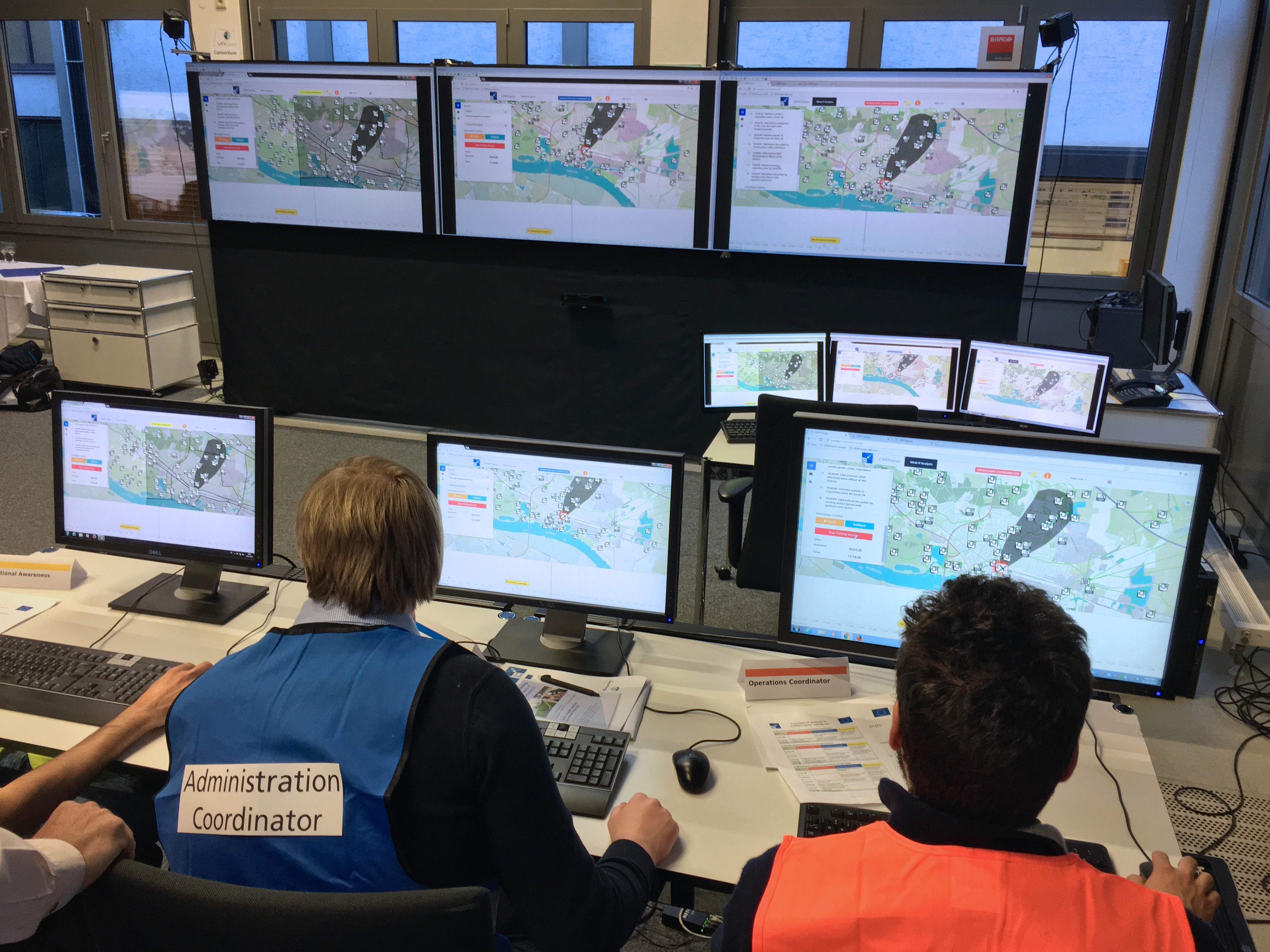A European Centre for the Prevention of Crises shall improve the preparedness for the emergency and cross-border cooperation in the future.
Preventive security: Fraunhofer IAIS founded association »2E!SAC« for protection of critical infrastructure in Europe
While earthquakes are raging repeatedly in Italy, Germany is affected more and more by floods. In 2012 there was even a volcanic eruption causing Europe-wide flying bans. Whether natural events, terror attacks, technical defects or human failures – catastrophes occur suddenly and knock out supply and transport routes. In an emergency, good training, quick decision-making ability and networked action decide about human lives and the amount of financial damage. In order to improve the protection concepts, a consortium led by the Fraunhofer Institute for Intelligent Analysis and Information Systems IAIS founded the »2E!SAC – Association for Improving Vital Infrastructures Resiliency in Europe«.
The association serves the purpose of sustainable research transfer: the eight founding members currently want to create the requirements for a European Centre for the Prevention of Crises. The protection concepts for prevention must be constantly adapted to technical, political and economic changes. The crises do not stop in front of borders, so a functioning pan-European cooperation of rescue services, fire brigades, authorities and operators of critical infrastructures (CI) is of the highest relevance.
Fraunhofer IAIS has been conducting research in the field of »Critical Infrastructure Protection« for more than ten years. In several national and EU research projects, it has developed together with its partners a decision-making system for CI operators and a training system for civil protection crisis management teams. In the CIPRTrainer, developed in the EU project CIPRNet, the scientists simulate, for example, a cyberattack on a railway control station, resulting in a train derailment and fire, or a flooding event
in the German-Dutch border area. In what-if analyses the trainees simulate in a team of four alternative action scenarios, for instance for finding out how to control the fire best. They see the consequences of their actions in a simulation on the basis of real geodata on the screen.
In the future, users, such as the police, fire brigade, CRITIS operators and authorities, could benefit from such highly sophisticated and adapted training systems. In a feasibility study, the researchers have shown how a European centre for crisis prevention could be implemented: the »European Infrastructures Simulation and Analysis Centre«, or EISAC for short. The participating institutions plan founding EISAC
nodes in the participating EU countries, which are interlinked with each other. In long term, this should comprehensively provide users with simulations, analyses, training and services of the research partners. The tools and technologies are adapted to the respective country and cross-border cooperation is promoted. In Italy, the first node is about to be established.
»For transferring research results in the area of critical infrastructure protection one needs to have a lot of staying power: in European countries, the institutional anchoring and the legal basis of crisis prevention are very heterogeneous,« says Dr. Erich Rome, initiator at Fraunhofer IAIS and chairman of the board of 2E!SAC. In Germany alone, there are around 50 institutions that deal with preventive security. Here, disaster management is a responsibility of a federal state, whereas in Italy, for example, it is organised centrally. »The US has long recognised the benefits of extensive models and simulations of crisis situations and established centres of competence. With the establishment of European nodal points, which can be linked to research institutions or other institutions, our work aims to create the same kind of competence centres in Europe«, added Rome.
In addition to Fraunhofer for Germany, ENEA and Università Campus Bio-Medico di Roma (Italy), TNO (Netherlands), CEA (France), University of Cyprus (Cyprus), Acris GmbH (Switzerland) and Tecnalia (Spain) are the founding members of the association. New members are always welcome.
More information:
www.ciprnet.eu, www.eisac.de
